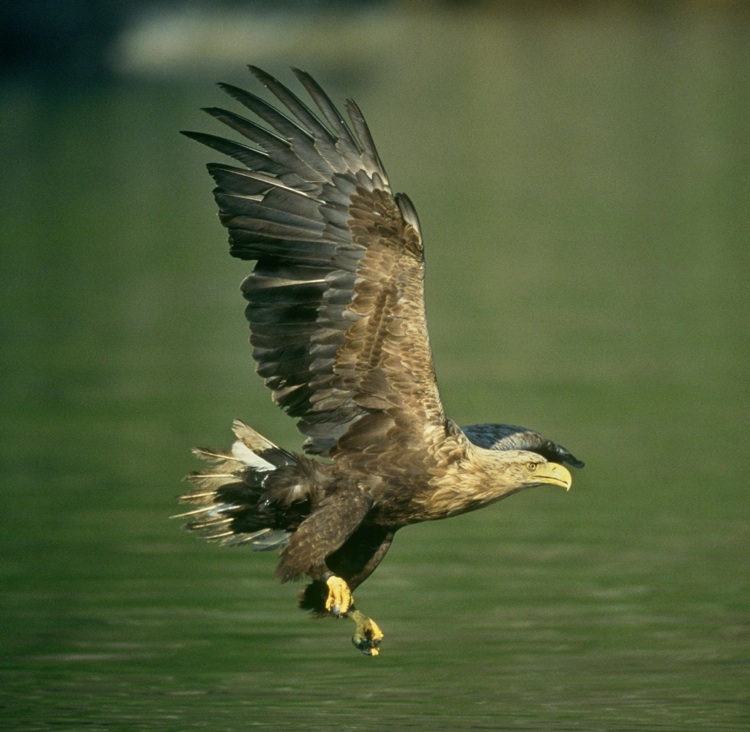A study of place-names reveals the extent of a once thriving eagle population roaming over a very different landscape to that of today.
An account of both place-name evidence and the archaeological record (Yalden 2007 British Birds 100: 471-480) was used to argue that White-tailed Eagles Haliaeetus albicilla were once widespread throughout lowland Great Britain, and that considering reintroduction to, for instance, East Anglia, was historically acceptable. However, that account noted that eagle place-names might plausibly refer to either White-tailed Eagle or Golden Eagle Aquila chrysaetos, and acknowledged the poor coverage of Celtic names. These shortcomings have been thoroughly addressed by a paper in the current issue Bird Study. [Richard J. Evans, Lorc├ín O’Toole & D. Philip Whitfield (2012): The history of eagles in Britain and Ireland: an ecological review of place-name and documentary evidence from the last 1500 years, Bird Study, DOI:10.1080/00063657.2012.683388]
Not only have they assembled a more substantial collection of over 500 place-names likely to relate to eagles (and another 160 names that despite an apparent “eagle” component probably refer in fact to churches or humans), but the names are more generally distributed across the British Isles, including a large number from Ireland. In examining these names, the authors used recent RSPB work documenting the differences in habitat choice by the two species to suggest which of the place-names refers to which species, with only a small number (19) left as uncertain or ambiguous: those in the lowlands, near water, in forest are more likely to be White-tailed Eagle, and those in open country, further from water, at higher altitudes are more likely to be Golden Eagle (Evans et al. 2010. Bird Study 57: 473-482).
This latest analysis of place-names suggest a once-extensive range for the White-tailed Eagle in England and Ireland, as well as around the periphery of Wales and Scotland, but also an extensive range for the Golden Eagle throughout upland Scotland, Northern England and Wales, as well as the fringe of Irish mountains. This suggested range is compared with that revealed by more recent historical records, and the combined evidence used to estimate the likely population sizes of the two species in Mesolithic times, about 500 AD and about 1800 AD. In Mesolithic times, there may well have been 2550 pairs of White-tailed, but only 650 pairs of Golden. With farming and forest clearance, the populations of both species are estimated at around 1000 pairs by 500 AD, and by 1800 AD White-tailed, suffering more directly from persecution as well as deforestation, were far scarcer than Golden. If it were still needed, there is plenty of evidence here to support the various reintroduction programmes already underway.
Picture credit: White-tailed Eagle © Chris Gomersall (rspb-images.com)
Blog with #theBOUblog
If you want to write about your research in #theBOUblog, then please see here.





